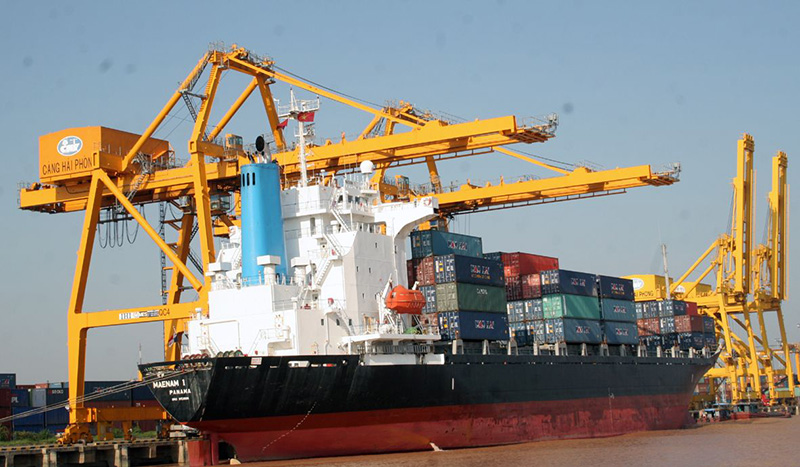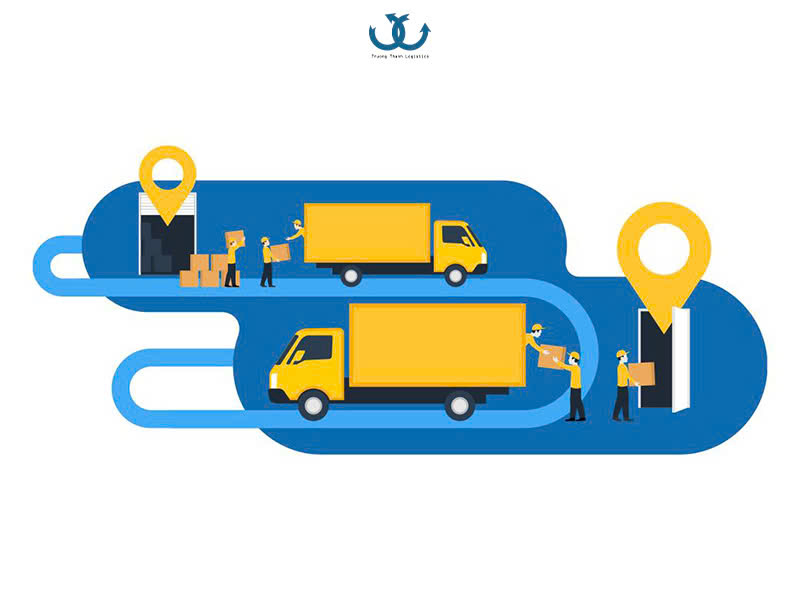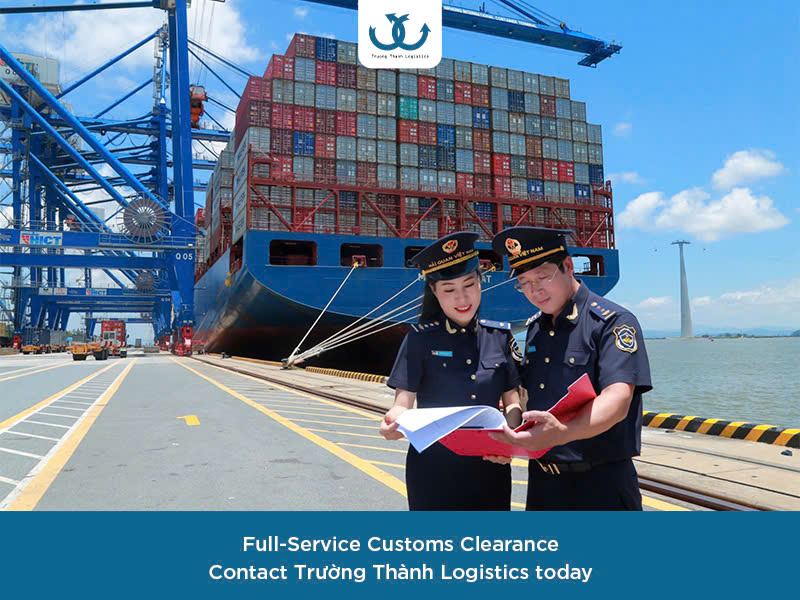In international freight transportation, cargo insurance is a financial shield protecting businesses from unexpected risks such as damage, loss, or accidents.
However, to maximize benefits from the insurance contract, businesses need to thoroughly understand the claim procedure, from preparing documents to calculating the compensation amount. A well-organized process not only helps shorten processing time but also ensures that businesses receive fair compensation.
Let’s explore the detailed procedure, required documents, and how compensation is calculated to protect your rights in the article below.
Cargo Insurance and the Importance of the Claim Procedure
Cargo insurance helps businesses minimize financial losses when goods encounter issues during import and export, such as damage from collisions, loss due to theft, or damage from natural disasters. However, receiving compensation does not happen automatically. Businesses need to follow a specific procedure, provide complete documentation, and coordinate closely with the insurance company.

Documents Required to File a Claim
To file a cargo insurance claim, businesses need to prepare a detailed set of documents, including papers proving the incident and the value of the loss.
Below is a list of the necessary documents:
+ Claim Letter: An official document clearly stating the compensation request, describing the incident, and the proposed amount.
+ Original Insurance Policy: Including the insurance contract and any amendments or supplements (if any).
+ Bill of Lading (B/L): The original or a copy proving that the shipment was transported.
+ Transportation Contract: Clearly stating the terms between the cargo owner and the carrier.
+ Notice of Loss or Letter of Protest: A document sent to the carrier or insurance company immediately upon discovery of the incident.
+ Survey Report: A report from an independent surveyor confirming the extent and cause of the damage.
+ Delivery Receipt: Proof that the goods were delivered to the consignee, with notes on the condition of the goods (if damaged).
+ Cargo Receipt Documents: Documents from the port, customs authority, or warehouse, recording the condition of the goods upon arrival.
+ Related Correspondence: Emails and official letters exchanged between the cargo owner, carrier, and insurance company.
+ Invoices and Additional Costs: Including the commercial invoice, transportation costs, and related fees (storage fees, repair costs).
Notes when preparing documents:
+ Accuracy: Ensure all provided documents are originals or notarized copies, avoiding errors in figures or information.
+ Illustrative Images: Include photos or videos of the scene (damaged container, broken goods) to increase persuasiveness.
+ Filing Deadline: Most insurance companies require filing claims within 7 – 14 days from the incident, depending on the contract.
Truong Thanh Logistics assists businesses in preparing and checking claim documents, ensuring completeness and compliance with regulations, thereby shortening processing time.
Cargo Insurance Claim Procedure
The cargo insurance claim procedure involves specific steps, requiring close coordination between the business and the insurance company. Below are the details of each step:
Step 1: Notifying the Incident
As soon as damage, loss, or an incident involving the goods is discovered, the business needs to immediately notify the insurance company to initiate the claim process. The ideal notification time is within 24-48 hours of discovering the incident.
How to notify:
+ By phone (insurance company hotline).
+ By email with a clear subject line (e.g., “Incident Notification for Shipment No. XYZ”).
+ In person at the insurance company’s office.
Information to provide:
+ Insurance Policy Number: The code or a copy of the contract.
+ Description of the Incident: Details about the time, location, and nature of the incident (damage, loss, accident).
+ Photos/Videos of the Scene: Recording the condition of the goods, container, or area where the incident occurred.
+ Related Documents: Bill of Lading, commercial invoice, delivery receipt.
Timely notification helps the insurance company promptly conduct an investigation, avoiding cases where claims are rejected due to delays.
Step 2: Investigation and Verification
After receiving notification, the insurance company will:
+ Receive Documents: Confirm the documents provided by the business, requesting additional ones if necessary.
+ Conduct an Investigation: Send a representative to the scene (if needed) or coordinate with a surveying agency to verify information. The investigation focuses on:
– Determining the cause of the incident (accident, transportation error, natural disaster).
– Checking if the incident falls within the scope of insurance coverage (according to the contract terms).
This process may take 3-7 days, depending on the complexity of the incident and the number of documents provided.
Step 3: Damage Assessment and Calculation
The insurance company proceeds to assess the damage to determine the compensation amount:
+ Determine the Cause: Analyze whether the incident was due to the carrier’s fault, weather conditions, or force majeure.
+ Check the Scope of Insurance: Compare the incident with the terms in the contract (all-risk insurance, specific risk insurance, etc.).
+ Assess the Damage: Determine the value of the damaged or lost goods based on:
– Commercial Invoice: The value of the goods before the incident.
– Survey Report: The extent of the damage (total loss, partial loss).
– Related Costs: Transportation fees, storage fees, or incurred expenses.
In some complex cases, the insurance company may hire an independent surveying agency to ensure transparency. The assessment results will be sent to the business in a detailed report, along with the proposed compensation amount.
Step 4: Compensation Payment
After completing the assessment, the insurance company sends a compensation confirmation notice, stating the amount and payment time. The business needs to provide bank information or necessary documents to receive the payment.
Payment Time:
+ According to the contract, the payment time is usually 7-30 days from the date the claim is approved.
+ In practice, complex cases (major damage, disputes) may take longer, up to 60 days.
Note:
+ Ensure accurate information is provided to avoid payment delays.
+ If disagreeing with the compensation amount, the business can negotiate or file a complaint with the insurance company, based on the survey report and the contract.
Truong Thanh Logistics assists businesses in tracking the claim process, coordinating with the insurance company to ensure prompt and fair payment.
How to Calculate Cargo Insurance Compensation
The amount of cargo insurance compensation depends on many factors, from the type of insurance to the actual loss value. Below are the main factors and how to calculate:
Influencing Factors:
+ Type of Insurance:
– All-Risk Insurance: Compensates for the entire value of the goods if completely lost or damaged.
– Partial Insurance: Only compensates for the risks listed in the contract.
– Specific Risk Insurance: Applies to specific incidents such as natural disasters or theft.
+ Contract Terms: Clearly stipulate the scope of compensation, maximum compensation level, and exclusions (e.g., damage due to improper packaging).
+ Loss Value: Based on:
– Commercial Invoice: The value of the goods at the time before the incident.
– Related Costs: Transportation fees, customs fees, or storage fees.
+ Depreciation Rate or Deductible:
– Depreciation: Applied to used goods, calculated as a percentage (e.g., 10% of the goods’ value per year).
– Deductible: The minimum loss amount that the business must bear itself (e.g., $500) before the insurance pays.
Compensation Calculation Formula:
Compensation Amount = Value of Goods Before Incident – Remaining Value (if any) – Depreciation Rate (if applicable) – Deductible (if any).
Important Notes When Filing a Claim
To ensure a smooth claim process, businesses should note:
+ Notify Early: Contact the insurance company as soon as the incident is discovered, avoiding violation of the notification deadline (usually 7-14 days).
+ Prepare Complete Documents: Carefully check all papers, especially the Bill of Lading, survey report, and commercial invoice, to avoid rejection due to missing documents.
+ Store Photos/Videos: Record the scene of the incident (damaged container, broken goods) as persuasive evidence.
+ Coordinate with the Carrier: Notify the carrier of the incident and request a delivery receipt noting the damage, supporting the investigation process.
+ Review the Insurance Contract: Carefully read the terms to understand the scope of coverage, exclusions, and filing deadlines.
Coordinating with a reputable logistics partner like Truong Thanh Logistics helps businesses reduce the pressure of preparing documents, negotiating with the insurance company, and handling arising issues.
Why Choose Truong Thanh Logistics for Your Transportation & Cargo Insurance Needs?

Truong Thanh Logistics is a leading logistics company in Vietnam with over 10 years of experience in international freight forwarding and insurance claim support. We offer comprehensive services, helping businesses optimize the claim process:
+ Professional Document Support: Consulting and preparing a complete and compliant claim file, minimizing the risk of rejection.
+ Effective Coordination: Working directly with the insurance company and carrier to expedite the investigation and payment process.
+ Cost Optimization: Ensuring businesses receive fair compensation while reducing incurred transportation costs.
+ Team of Experts: A global network of partners and an experienced team help handle all situations, from damage incidents to compensation disputes.
Truong Thanh Logistics has partnered with thousands of import-export businesses, providing reliable logistics and cargo insurance solutions. Let us help you protect your rights and transport goods safely!
For assistance with import and export information, international freight, sea transport or import entrustment, please contact Truong Thanh Logistics at the address:
Truong Thanh Logistics – Dedication, Prestige
Hotline: 0915 36 38 39
Headquarter: 26th Floor, Tower A, Song Da Building, Pham Hung, Nam Tu Liem, Hanoi.
Email: sale@truongthanhjsc.com
info@truongthanhlogistics.com
Website: www.truongthanhlogistics.com
Hai Phong Branch
Address: R.A11, TTC Building, 630 Le Thanh Tong, Hai An, Hai Phong
Da Nang Branch
Address: 27 Nguyen Ba Lan, My An Ward, Ngu Hanh Son District, Da Nang.
HCMC Branch
Address: Room 41, 4th floor, Casanova building, 85 Nguyen Son street, Phu Thanh ward, Tan Phu district, Ho Chi Minh City











